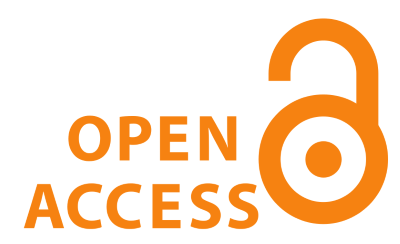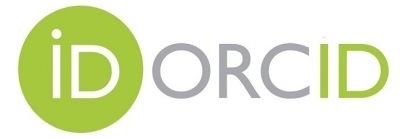Can “YouTube” Help Patients and Relatives with PEG Use and Care at Home?
DOI:
https://doi.org/10.5281/zenodo.15104959Keywords:
Caregivers, Gastrostomy, Patient Discharge, Social Media, YouTubeAbstract
Objective: This study evaluates YouTube videos on gastrostomy care, focusing on their key components and usability, with particular attention to caregivers' challenges during post-discharge care. The primary goal is to assess the quality and usefulness of these videos and identify resources that effectively support caregivers in managing gastrostomy care after discharge.
Material and Methods: The first five pages of YouTube search results were analyzed based on specific criteria. Between January 19 and 29, 2023, videos were analyzed using search terms related to "peg tube," "percutaneous endoscopic gastrostomy tube," "gastrostomy tube," "g-tube," and "stomach tube." Each video was evaluated using a scoring system, assigning 2 points for major criteria and 1 point for minor criteria. Videos meeting the major criteria and scoring 13 or higher were considered useful.
Results: 500 videos, 219 (43%) met the inclusion criteria, with 101 classified as useful. Useful videos tended to have higher view counts, longer durations, and better scores. Videos from individual sources were less likely to be categorized as useful. Significant correlations were identified between the total video score and metrics such as views, daily views, Video Power Index (VPI), and overall score, with strong interobserver agreement observed.
Discussion and Conclusion: Viewer preferences strongly correlate with video efficacy, underscoring the importance of effective search techniques in making YouTube a valuable resource for PEG care. The study highlights the critical role of source credibility and viewer engagement, particularly given that PEG supports safe long-term enteral nutrition while placing significant responsibilities on caregivers post-discharge.
References
Who, Joint, and FAO Expert Consultation. Diet, nutrition and the prevention of chronic diseases. World Health Organ Tech Rep Ser. 2003;916:1-149.
Gauderer MW, Ponsky JL, Izant RJ. Gastrostomy without laparotomy: a percutaneous endoscopic technique. J Pediatr Surg. 1980;15:872-875.
Best C. Percutaneous endoscopic gastrostomy feeding in the adult patient. Br J Nurs. 2009;18:724-729.
Sezer RE, Ozdemir Koken Z, Senol Celik S. Home percutaneous endoscopic gastrostomy feeding: difficulties and needs of caregivers, qualitative study. JPEN J Parenter Enteral Nutr. 2020;44:525-533.
Aktoz F, Tercan C, Dagdeviren E, Kaya C. Comparison of laparoscopic hysterectomy videos on YouTube and WebSurg platforms in terms of educational reliability and quality. J Gynecol Obstet Hum. 2022;51:102435.
Fischer J, Geurts J, Valderrabano V, Hügle T. Educational quality of YouTube videos on knee arthrocentesis. J Clin Rheumatol. 2013;19(7):373-6
Goobie GC, Guler SA, Johannson KA, Fisher JH, Ryerson CJ. YouTube videos as a source of misinformation on idiopathic pulmonary fibrosis. Ann Am Thorac Soc. 2019;16(5):572-9.
Roche V. Percutaneous endoscopic gastrostomy: clinical care of PEG tubes in older adults. Geriatrics (Basel, Switzerland). 2003;58:22-26.
Angus F, Burakoff R. The percutaneous endoscopic gastrostomy tube: medical and ethical issues in placement. Am J Gastroenterol. 2003;98:272-277.
Gottrand F, Sullivan PB. Gastrostomy tube feeding: when to start, what to feed and how to stop. Eur J Clin Nutr. 2010;64:S17-S21.
Mark I, Hey G, Colliander R, McCracken B, Casauay J. The role of G-tube placement for neurologic injury patients. Biomed Sci Clin Res. 2022;1:1.
Nishide N, Ono H, Kakushima N, et al. Clinical outcomes of endoscopic submucosal dissection for early gastric cancer in remnant stomach or gastric tube. Endoscopy. 2012;44:577-583.
Kozanhan B, Tutar MS, Arslan D. Can “YouTube” help healthcare workers for learning accurate donning and doffing of personal protective equipments? Enferm Infecc Microbiol Clin. 2022;40:241-247.
Azer SA, AlGrain HA, AlKhelaif RA, et al. Evaluation of the educational value of YouTube videos about physical examination of the cardiovascular and respiratory systems. J Med Internet Res. 2013;15:e2728.
Azer SA. Can “YouTube” help students in learning surface anatomy? Surg Radiol Anat. 2012;34:465-468.
Azer SA. Understanding pharmacokinetics: are YouTube videos a useful learning resource? Eur Rev Med Pharmacol Sci. 2014;18.
Azer SA, AlKhawajah NM, Alshamlan YA, et al. Critical evaluation of YouTube videos on colostomy and ileostomy: can these videos be used as learning resources? Patient Educ Couns. 2022;105:383-389.
Ferhatoglu MF, Kartal A, Ekici U, Gurkan A. Evaluation of the reliability, utility, and quality of the information in sleeve gastrectomy videos shared on open access video sharing platform YouTube. Obes Surg. 2019;29:1477-1484.
Demirci A, Halil B. YouTube is an unreliable source of information about delayed ejaculation treatment. Urol J. 2023;39:15603231204077.
DeLegge MH, Salzman J, Robson K. Gastrostomy tubes: placement and routine care. UpToDate. January 25, 2022.
Haslam K, Doucette H, Hachey S, MacCallum T, Zwicker D, Smith-Brilliant M, Gilbert R. YouTube videos as health decision aids for the public: an integrative review. Can J Dent Hyg. 2019;53(1):53.
Stevenson FA, Kerr C, Murray E, Nazareth I. Information from the internet and the doctor-patient relationship: the patient perspective–a qualitative study. BMC Fam Pract. 2007;8:1-8.
Laugesen J, Hassanein K, Yuan Y. The impact of internet health information on patient compliance: a research model and an empirical study. J Med Internet Res. 2015;17:e143.
Gokcen HB, Gumussuyu G. A quality analysis of disc herniation videos on YouTube. World Neurosurg. 2019;124:e799-e804.
Curran V, Simmons K, Matthews L, Fleet L, Gustafson DL, Fairbridge NA, Xu X. YouTube as an educational resource in medical education: a scoping review. Med Sci Educ. 2020;30:1775-1782.
Coskun BN, Yagiz B, Chalil EG, Dalkılıç E, Pehlivan Y. The usefulness and reliability of English-language YouTube videos as a source of knowledge for patients with familial Mediterranean fever. PeerJ. 2024;12:e16857.
Duncan I, Yarwood-Ross L, Haigh C. YouTube as a source of clinical skills education. Nurse Educ Today. 2013;33:1576-1580.
Burke SC, Snyder S, Rager RC. An assessment of faculty usage of YouTube as a teaching resource. Internet J Allied Health Sci Pract. 2009;7:8.
Murugiah K, Vallakati A, Rajput K, et al. YouTube as a source of information on cardiopulmonary resuscitation. Resuscitation. 2011;82:332-336.
Zengin O, Onder ME. Educational quality of YouTube videos on musculoskeletal ultrasound. Clin Rheumatol. 2021;40:4243-4251.
Li M, Yan S, Yang D, Li B, Cui W. YouTube™ as a source of information on food poisoning. BMC Public Health. 2019;19:1-6.
Muoki D. Patient education on PEG tube care at home. Nursing. 2023;53:11-12.
Kalayci M, Cetinkaya E, Suren E, Yigit K, Erol MK. Are YouTube videos useful in informing patients about keratoplasty? Semin Ophthalmol. 2021;36(7):Taylor & Francis.
Satici MH. Evaluation of YouTube Videos for Learning Interfascial Plane Blocks. Med Records. 2024;6(3):317-23.
Downloads
Published
How to Cite
Issue
Section
License
Copyright (c) 2025 MEHES JOURNAL

This work is licensed under a Creative Commons Attribution 4.0 International License.










